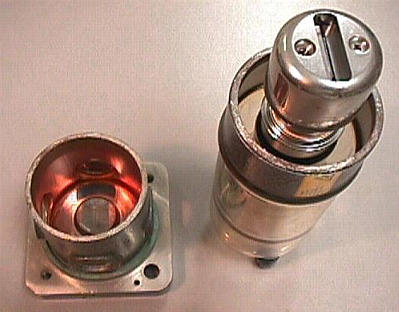
The photograph below shows the inside of a sealed glass copper X-ray tube which has been cut into halves. The orange-coloured copper metal anode, clearly visible in the left-hand part of the picture, is covered with a thin tungsten deposit from the heating element, which is just visible in the right-hand part of the picture.

The next two photographs show some details of the cooling of the anode target. Chilled water (at approximately 15°C) is sprayed at high pressure (approximately 4 bars) through the slit onto the back of the anode surface. Most X-ray tubes have a small filter shown in the right-hand picture to prevent small particles in the water supply damaging the rear of the anode. If you have problems with the water supply, do not forget to check this filter for blockages.
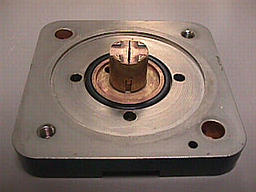 |
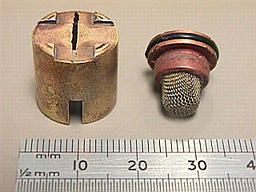 |
The final pictures show on the left a close-up of the cathode assembly with the focussing cup visible in the upper photograph removed. The small gap between the filament and the cathode assembly ensures that the electron cloud is directed towards the anode. One end of the filament is at the same potential as the focussing cup (e.g. -40 kV) while the other end is slightly less negative, thus providing a current of a few amps to heat the filament. The right-hand picture shows the two high voltage contacts of the X-ray tube, the anode itself being at the earth potential.
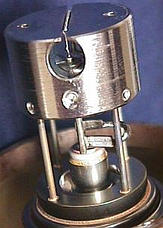 |
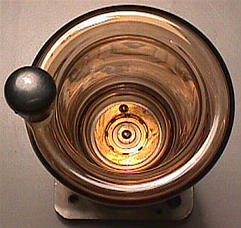 |
| © Copyright 1997-2006. Birkbeck College, University of London. | Author(s): Jeremy Karl Cockcroft |